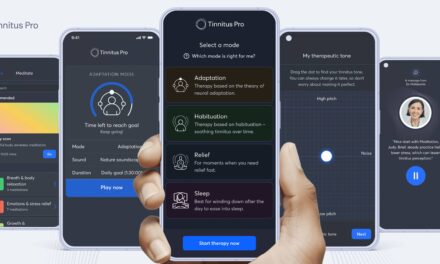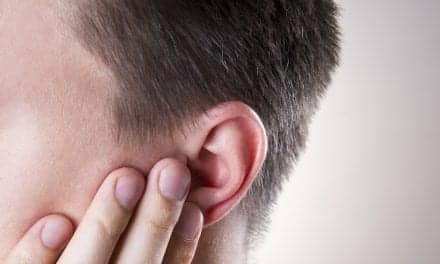Tech Topic: Tinnitus | June 2015 Hearing Review
Choosing the correct sound to use in sound therapy can often have a significant impact on treatment outcomes. With the flexibility of today’s technology, we have the opportunity to provide an almost endless array of sounds that can be selected by individuals themselves, offering a range of tinnitus solutions that allow for true personalization.
Variety is the spice of life. These are the words spoken by the 18th century English poet William Cowper. If this cherished phrase is indeed true, then it seems unlikely that the approximately 15 million people in the United States who have clinically treatable tinnitus will all find relief using the same treatment.
There are multiple tinnitus management protocols that have aided people in finding some relief of their tinnitus. The majority of these protocols emphasize that, as tinnitus is a perception of sound, therapy should be an essential part of the treatment. Therefore, how people perceive their tinnitus will influence how they feel and, in turn, react to their tinnitus. This is very individualized from person to person. Just as the tinnitus perception can vary greatly from one person to another, so too can the sounds people prefer to use in sound therapy.
Everyone is Different
One of the greatest challenges in working with the tinnitus population is that everyone is different. View someone’s music list on their phone or tablet—the chances of having another person with the exact same playlist are highly unlikely. The sounds we listen to, whether they are by choice or by-products of a particular environment, vary significantly from person to person. The sounds we prefer to listen to can even vary according to specific factors such as mood, time of day, or location, to name a few.
Searchfield et al1 pointed out that sounds used for sound therapy can vary in their temporal, spectral, and emotion-evoking characteristics, and that individual differences can influence the effectiveness of specific sounds over others. In the past, people suffering from tinnitus have had limited sound therapy options, which has made it challenging to find the flexibility and personalization suggested by many tinnitus management protocols. A basic white noise generating instrument or a set of headphones and a walkman were some of the more flexible options in the past.
Times have changed, and in recent years tinnitus has moved more to the forefront of our industry, as it appears to be a growing concern for many people. It is estimated that 3% to 5% of the population experiencing tinnitus have it to a degree where it could be clinically treatable.2 In fact, the Veterans Administration Annual Benefits reported that there was an approximately 30% increase of tinnitus-related services to veterans between 2010 and 2012, and an approximately 25% increase for first-time compensation recipients in the same time span.3
With what appears to be a growing number of people and a concommitant need for these clinical services, having solutions that meet the demands of patient individuality is paramount for successful implementation of sound therapy. ReSound’s Nature Sounds™ options and the ReSound Relief™ app for tinnitus are designed to expand upon our core sound therapy platform, which offers flexible controls such as frequency shaping, amplitude modulation, and Environmental Steering™.
One Size Does Not Fit All
It has been shown that broadband stimuli, such as white noise, is an effective sound for managing tinnitus. In addition, it’s suggested these sounds should follow certain principles, such as not irritating or annoying the user.4
Although broadband sounds have helped many people in tinnitus management, it is not a one-size-fits-all remedy, and therefore many people habituate to the broadband noise. However, there are others who simply do not accept it as a soothing or therapeutic sound. This does not diminish the merits of broadband noise stimuli, but rather acknowledges that they do not provide relief for everyone—and emphasizes the need for more flexible solutions.
Henry et al5 showed that some people prefer to listen to computer-generated dynamic sounds that enhance short-term variations in amplitude over traditional broadband noise stimuli. Reavis et al6 found that modulated sounds—particularly low-rate amplitude tones with a higher carrier frequency in the tinnitus pitch range—were the most effective in reducing tinnitus loudness. Again, these results demonstrate the variance in preferences for individuals with tinnitus.
Sound classification can even change from each tinnitus management plan, as well as from person to person. Progressive Tinnitus Management (PTM) classifies sounds into 3 different categories: soothing, interesting, and background sounds. Other tinnitus management plans refer to therapeutic, calming, and distracting sounds.
Regardless of the category name, not everyone will classify the same sounds as interesting or calming. Sound preference is very individual, and can also be relative to another type of sound.
For example, if you ask a tinnitus patient if they prefer broadband noise or chimes, they may not prefer either sound; however, if forced to choose because of the technology limitation, they may say they prefer to listen to broadband noise over chimes on a regular basis. And although one person might categorize broadband and chimes as soothing background sounds, someone else might classify them as disturbing and irritating.
Having the flexibility to offer sounds that the patient prefers and accepts can be one of the key first steps of successful sound therapy.
Nature Sounds for Tinnitus Relief
To expand the flexibility of our tinnitus sound generator (TSG), Nature Sounds options have been added as alternative sounds to the white noise generator in the ReSound Aventa® fitting software (Figure 1). Nature Sounds are synthesized versions of the natural water sounds. They were created by applying modulation extraction derived from recordings of actual water sound environments.
This patented technique makes it possible to play sounds directly from data stored in the hearing aid memory without need for connection to an external device. Henry et al5 found that air and water sounds used in sound therapy caused the least amount of annoyance to the subjects. These sounds were preferred over the other options, including narrow-band and broadband stimuli, as well as other nature-inspired sounds.
Similarly, an independent study by SenseLab asked listeners to rate their preferences of 13 different sound stimuli (unpublished study: “Listening test on tinnitus relaxation sounds,” SenseLab, Hørsholm, Denmark, 2014). The project included recordings and editing of sounds, elicitation of attributes and a listening test with normal hearing and hearing impaired assessors. The tested material included noise, a synthesized tonal sound, and a selection of natural sounds. Both original recordings and synthesized versions of these natural sounds were based on modulation extraction. The stimuli were presented over headphones to the assessors in random order from the SenseLabOnline software for listening tests. This software also collected the assessments for the final statistical analysis.
The overall conclusion was that selected synthesized versions of the natural sound recordings seem to be the optimal choice for general tinnitus relaxation sounds. It should be remembered, however, that preferences vary considerably among individuals. From these results, ReSound selected the 6 top-rated sound files from among the 13 evaluated for Nature Sounds (Figure 1).
Nature Sounds can be activated within the Tinnitus section of the ReSound Aventa fitting software. Each sound is a broadband stimulus extracted with the natural amplitude modulations of the respective environment. In an internal trial, “Breaking Waves” was the most-preferred sound, with comments such as “pleasantness” and “least irritable” reported by subjects. This preference was in agreement with the results from the SenseLab study.
Ultimate Personalization

Figure 2. Homescreen for the ReSound Relief™ app. The large bubbles represent soundscapes and the smaller empty bubbles can be popped for
a relaxing tactile exercise.
Not all people prefer to listen to broadband noises, as earlier stated. The ReSound Relief™ app offers users the ability to introduce sounds into their sound therapy beyond what is inside their hearing instrument. These include environmental sounds, music, personal imported sounds, as well as guided relaxation exercises.
The app ultimately acts as a multisensory personal sound player (Figure 2). It allows users to create personalized soundscapes that integrate auditory, visual and tactile cues to help distract them from focusing on their tinnitus. Each soundscape can be personalized by name, mood color, and a layering of multiple sounds. Up to five sounds can be layered in any individual soundscape by using the sound mixer (Figure 3).

Figure 3. Sound Mixer for the ReSound Relief app. The volume for each sound can be adjusted using the slider. This allows for dynamic soundscapes that can be created and personalized by the user.
The ReSound Relief app also offers tinnitus information to support counseling concepts and provides beneficial tips for those suffering from tinnitus. In addition, it can record usage of the app, enabling users to automatically monitor the sounds they use the most. Sounds from the app can be streamed to ReSound LiNX2 hearing instruments and combined with amplification to compensate for potential hearing loss. As a majority of tinnitus suffers also have some degree of hearing loss, this is the optimal solution.
For tinnitus sufferers without hearing loss, the app can also be used simply by plugging in a set of headphones. Thus, independent of the hearing loss configuration, this is a very valuable tool for people with tinnitus. It is available as a free download on both the App StoreSM and Google Play. (Authors’ note: To stream sound from an Android device to ReSound LiNX2 hearing instruments, a PhoneClip+ or Mini Microphone accessory is required. See www.gnresound.com/reliefapp for details.)
Conclusion
Just as we all prefer a different dessert after dinner, or a different genre of movie on a Saturday night, the individuality and variance of sound preference within the tinnitus population is an important aspect. Choosing the correct sound to use in sound therapy can often have a significant impact on treatment outcomes.
With the flexibility of today’s technology, we have the opportunity to offer an almost endless array of sounds that can be selected by individuals themselves. By offering flexible tinnitus solutions that allow for true personalization, we can rest assured that William Cowper’s words still ring true today: variety is the spice of life. Even for those seeking relief from tinnitus.
References
-
Searchfield GD, Cameron H, Irving S, Kobayashi K. Sound therapies and instrumentation for tinnitus management. New Zealand Med Jour. 2010:123(1311):112-125.
-
Davis A, Rafaie AE. Epidemiology of tinnitus. In Tyler R, ed. Tinnitus Handbook. San Diego: Singular Publishing Group;2000.
-
Veterans Administration Annual Benefits Report [2012]. Available at: http://www.benefits.va.gov/reports/abr/2012_abr.pdf
-
Jastreboff PJ, Hazell JWP. Tinnitus Retraining Therapy: Implementing the Neurophysiological Model. Cambridge: Cambridge University Press;2008.
-
Henry JA, Rheinsburg B, Zaugg TL. Comparison of custom sounds for achieving tinnitus relief. J Am Acad Audiol. 2004:15(8):585-598.
-
Reavis KM, Rothholtz VS, Tang Q, Carroll JA, Djalilian H, Zeng F. Temporary suppression of tinnitus by modulated sounds. JARO. 2012: 13;561-571.
Michael Piskosz, MS, serves as a senior global audiologist on the Global Audiology team for GN ReSound, along with being the International Product Manager for tinnitus.
Ole Dyrland, BScEE, is director of technology integration at GN ReSound A/S in Taastrup, Denmark.
CORRESPONDENCE can be addressed to: [email protected]
Original citation for this article: Piskosz M, Dyrland O. Flexible and Personalized Sound Therapy. Hearing Review. 2015;22(6):26.








